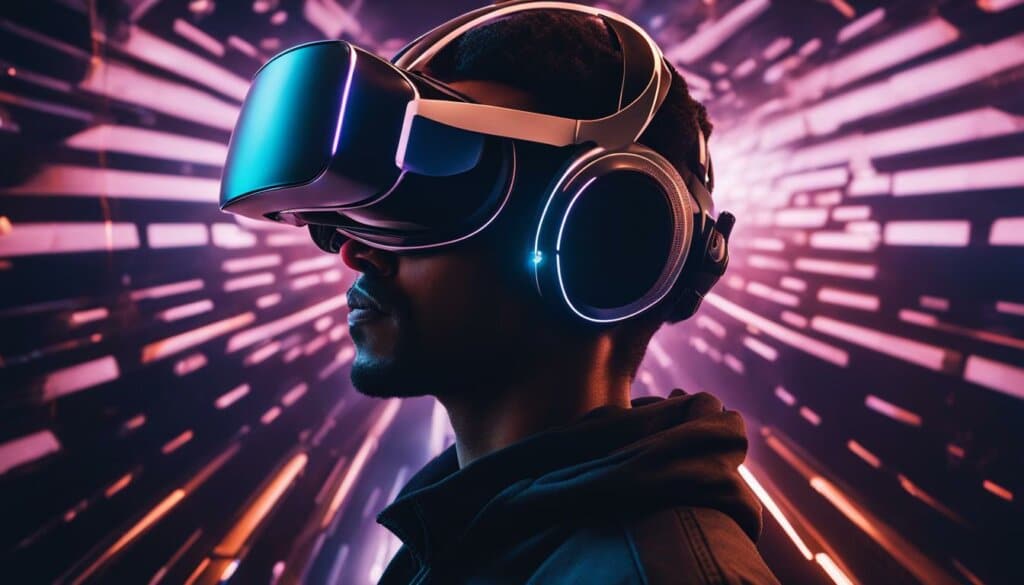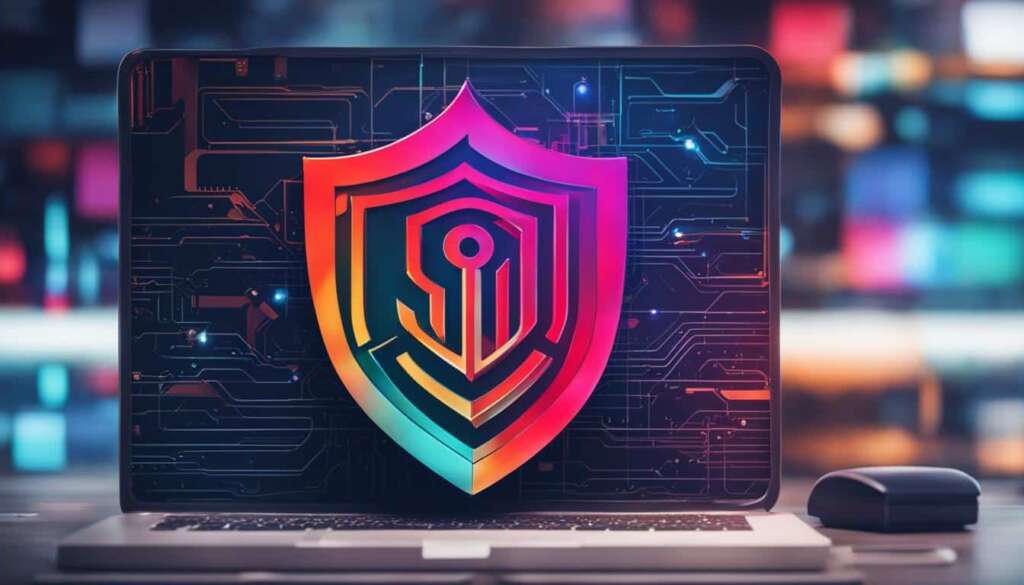Table of Contents
Virtual reality, augmented reality, and mixed reality technologies have gained popularity in recent years. However, the topic of security in these immersive experiences is often overlooked. This article will explore the unique security challenges posed by virtual reality, including the risk of data theft, physical harm, and the leakage of sensitive information. It will also provide suggestions and tips for ensuring good security and safety when using virtual reality.
In this rapidly evolving digital landscape, VR cybersecurity is of utmost importance. With the growing adoption of virtual reality, it is crucial to understand the potential risks and vulnerabilities that come with it. From protecting personal data to safeguarding virtual environments, comprehensive measures are needed to ensure the security and privacy of users.
Join us as we delve into the world of virtual reality security, exploring the ways in which we can defend against cyber threats and create a safe and immersive virtual reality experience.
The Risks of Data Theft and Cyber Attacks in Virtual Reality
Virtual reality (VR) has brought about a new era of immersive experiences, allowing users to explore virtual worlds and interact with digital content like never before. However, with the rise of VR comes a new set of cybersecurity risks that users and organizations must be aware of. Protecting virtual reality environments from data theft and cyber attacks is crucial to ensure the safety and privacy of users.
VR headsets and devices are vulnerable to the same cybersecurity threats as other electronic devices. Cyber criminals can target VR systems to access personal information, steal identities, and cause damage to hardware and software. The seamless integration between the virtual and physical worlds opens up opportunities for malicious actors to exploit vulnerabilities and gain unauthorized access to sensitive data.
To prevent data theft and cyber attacks in virtual reality, it is important to implement robust cybersecurity solutions. Virtual reality cybersecurity solutions encompass a range of measures, including encryption to secure data transmission, authentication protocols to verify user identities, and continuous monitoring to detect and respond to threats in real-time. By adopting these measures, organizations and individuals can protect their virtual reality experiences from potential security breaches.
“Virtual reality brings forth exciting opportunities, but it also introduces new vulnerabilities. As we immerse ourselves in virtual worlds, we must be vigilant in safeguarding our data and protecting our identities from cyber threats.”
In addition to technological measures, user awareness and education play a crucial role in virtual reality threat prevention. Users should be cautious when downloading and installing VR applications, ensuring that they are from trusted sources. Regular software updates and patches should also be applied to keep VR systems protected against known vulnerabilities. By taking these proactive steps, users can enhance the security of their virtual reality experiences and mitigate the risks of data theft and cyber attacks.
Virtual Reality Cybersecurity Solutions
| Security Measure | Description |
|---|---|
| Encryption | Encrypting data transmitted between VR devices and servers to protect it from unauthorized access. |
| Authentication | Implementing robust authentication protocols to verify the identities of users and prevent unauthorized access to virtual reality environments. |
| Continuous Monitoring | Utilizing advanced monitoring systems to detect and respond to cyber threats in real-time. |
| User Education | Providing users with information and training on virtual reality security best practices, including the risks of data theft and cyber attacks. |
The Challenge of Identity in Virtual Reality
Virtual reality presents a unique challenge when it comes to identity. In virtual reality, everything is virtual and can be faked, making it difficult for users to determine what is real and safe. This poses a significant cybersecurity challenge as users engage in virtual transactions and interactions, unsure of the authenticity of the environment and the people they encounter. Finding a solution to this challenge remains a priority in the field of virtual reality cybersecurity.
The risk of identity theft and fraud is heightened in virtual reality environments. Unlike in the physical world, where individuals can rely on visual cues and facial expressions to assess trustworthiness, virtual reality lacks these indicators. Users cannot easily confirm the authenticity of the virtual identities they encounter, leaving them vulnerable to scams, phishing attempts, and social engineering tactics.
This challenge requires a multi-faceted approach to cyber protection in virtual reality. Implementing robust authentication measures, such as biometric verification or two-factor authentication, can help verify identities and establish trust in virtual environments. Additionally, incorporating advanced AI algorithms and machine learning can assist in detecting and mitigating suspicious activities and potential identity fraud.
Table: Virtual Reality Identity Authentication Methods
| Authentication Method | Description |
|---|---|
| Biometric Verification | Utilizing unique physical characteristics, such as fingerprints or facial recognition, to confirm an individual’s identity. |
| Two-Factor Authentication | Requiring users to provide two separate forms of identification (e.g., a password and a unique code sent to a registered mobile device) to access virtual reality platforms. |
| Behavioral Analysis | Tracking and analyzing a user’s behavioral patterns, such as typing speed or movement patterns, to detect anomalies or potential identity fraud. |
| AI-Based Identity Verification | Utilizing artificial intelligence and machine learning algorithms to analyze user behavior, verify identities, and detect potential fraudulent activities. |
By leveraging these authentication methods, virtual reality platforms and applications can enhance cyber protection and safeguard VR environments. However, it is important to continue researching and developing innovative solutions to stay ahead of cybercriminals in the ever-evolving landscape of virtual reality.

Virtual reality presents a unique challenge when it comes to identity. In virtual reality, everything is virtual and can be faked, making it difficult for users to determine what is real and safe.
Securing VR Platforms: Ensuring Safe and Trustworthy Immersive Experiences
As virtual reality (VR) becomes more prevalent in various industries, it is essential to prioritize security measures to safeguard VR platforms and protect users from potential risks. VR technologies offer unique immersive experiences, but they also introduce new challenges in terms of cybersecurity. To ensure a safe and trustworthy VR environment, VR security measures must be implemented to defend against social manipulation, unauthorized data collection, and potential physical harm.
Social manipulation and social engineering pose significant threats in VR environments. With the ability to distort a user’s perception of reality, bad actors can exploit vulnerabilities and deceive users in immersive experiences. These manipulative tactics can lead to the theft of personal information, financial fraud, and other malicious activities. To mitigate these risks, VR platforms should implement security protocols to authenticate users and detect fraudulent behaviors. Additionally, educating users about the risks of social manipulation and promoting awareness of security best practices can enhance overall protection in VR environments.
Virtual reality is a playground for social engineering. The potential to deceive and manipulate users is heightened in VR environments, making security measures a critical aspect of the immersive experience. By implementing multi-factor authentication, user behavior analysis, and proactive threat detection, VR platforms can safeguard against social engineering tactics and ensure the integrity of virtual interactions.
Unauthorized data collection is another key concern in VR environments. The unique movement tracking capabilities of VR systems increase the risk of personal data being collected without user consent. To address this issue, VR platforms should adopt strict data privacy policies and encryption protocols to protect user information. Anonymizing and minimizing the collection of personal data can also minimize the potential impact of data breaches and unauthorized access. Additionally, regular security audits and vulnerability assessments can help identify and address potential weaknesses in the data security of VR platforms.
Physical harm is a potential risk in VR experiences, particularly when using earlier generation VR headsets. Virtual reality can induce motion sickness and disorientation, which may lead to accidents or injuries if users are not properly informed or supervised. VR platforms should provide clear guidelines and warnings about physical discomfort and safety precautions. Enhancing user education and providing features such as break reminders and adjustable VR settings can help mitigate these risks and ensure a safe and enjoyable VR experience.
Table: VR Security Measures
| Security Measure | Description |
|---|---|
| Multi-factor authentication | Implementing additional authentication steps, such as biometrics or SMS verification, to enhance user identity verification and protect against unauthorized access. |
| Data encryption | Applying encryption protocols to protect user data from unauthorized access and ensure its confidentiality. |
| User education | Offering comprehensive training and guidelines to educate users about potential risks, safety practices, and security best practices in VR environments. |
| Regular security audits | Conducting periodic assessments to identify vulnerabilities in the security infrastructure and address them before they can be exploited. |
| Physical safety measures | Providing clear warnings, instructions, and ergonomic guidelines to ensure users’ physical safety and prevent accidents or injuries. |
Physical Harm and Motion Sickness in Virtual Reality

Virtual reality (VR) experiences offer users a sense of immersion and presence in digital environments. However, these experiences can also pose risks to users’ physical well-being. Motion sickness, disorientation, and nausea are common side effects of VR use, especially with earlier generation headsets. These negative physical reactions can impair a user’s focus and awareness of the real world, potentially leading to accidents or injuries.
To address these potential risks, it is important to take preventive measures and prioritize user safety in VR experiences. VR developers and manufacturers have been working to improve the design of headsets and reduce motion sickness. Advances in technology, such as higher refresh rates and reduced latency, are helping to minimize the discomfort associated with VR use.
Furthermore, proper awareness and education about VR usage can also contribute to preventing physical harm. Users should be encouraged to take breaks during prolonged VR sessions, maintain a comfortable room temperature, and ensure that the VR environment is clear of obstacles to reduce the risk of accidents. By implementing these preventive measures and continuously researching and improving VR technology, we can enhance the safety and user experience in virtual reality.
Unique Security Challenges in Augmented Reality
While virtual reality (VR) presents its own set of security challenges, augmented reality (AR) introduces a distinct set of concerns. As AR blends the virtual and real world, it becomes imperative to address the unique vulnerabilities that arise. Ensuring the security and integrity of AR experiences is essential to protect users and their interactions in this immersive environment.
One of the key security challenges in AR is the integration of artificial intelligence (AI) and sophisticated applications. AI-driven AR experiences rely on complex algorithms and machine learning models to provide real-time information and enhance user interactions. However, these AI systems can be susceptible to attacks if not properly secured. Malicious actors may exploit vulnerabilities in AI algorithms, leading to the manipulation of AR content and potentially compromising user privacy and safety.
Additionally, there is a risk of embedding inappropriate content within AR experiences. As AR overlays digital content onto the user’s physical environment, there is a concern that malicious actors could introduce objectionable or harmful elements. This can range from offensive images or messages to misleading or false information presented as part of the AR experience. Ensuring content moderation and implementing robust security measures is crucial to prevent such incidents and protect AR users.
| Unique Security Challenges in Augmented Reality | Implications |
|---|---|
| Integration of AI and sophisticated applications | Potential vulnerabilities, manipulation of AR content |
| Embedding inappropriate content within AR experiences | Risk of offensive or harmful content, misleading information |
| Privacy concerns in AR interactions | Potential leakage of personal or sensitive data |
Privacy concerns also arise in AR interactions. As users engage with AR content and interact with virtual objects or digital overlays, there is a potential risk of personal or sensitive data being leaked. For example, AR applications may collect location data or access the user’s camera and microphone, raising privacy concerns. It is crucial to implement strong privacy controls and obtain user consent for data collection and usage to mitigate these risks and foster trust in AR experiences.
Security Principles for Virtual Reality and Augmented Reality
When it comes to virtual reality (VR) and augmented reality (AR), cybersecurity is of utmost importance. These immersive technologies introduce unique security challenges that must be addressed to ensure the safety and privacy of users. By following a set of security principles and best practices, VR and AR platforms can be secured against potential threats and vulnerabilities.
Firmware and Software Updates: Keeping VR and AR devices up to date with the latest firmware and software updates is crucial for maintaining security. These updates often include important fixes and patches that address known vulnerabilities. By regularly updating devices, users can stay one step ahead of potential cyber threats.
Use of VPNs: Virtual private networks (VPNs) provide an additional layer of security when using VR and AR platforms. By encrypting internet traffic and masking IP addresses, VPNs help protect users’ online privacy and prevent unauthorized access to personal information.
It is essential to prioritize security in virtual and augmented reality environments to mitigate potential risks and ensure a safe and secure user experience.
Caution with Third-Party Applications: When installing applications for VR and AR, users should exercise caution, especially when downloading from unknown sources. It is important to verify the legitimacy and reputation of the app developer to avoid installing malicious software that could compromise the security of the device or the user’s personal information.
Review Privacy Policies: Before using VR and AR platforms, users should take the time to review and understand the privacy policies of the applications and platforms they are using. This will ensure they have a clear understanding of how their data is collected, stored, and shared within the VR or AR environment.
| Security Principles for VR and AR | Description |
|---|---|
| Firmware and Software Updates | Regularly update devices to address known vulnerabilities. |
| Use of VPNs | Protect online privacy and prevent unauthorized access to personal information. |
| Caution with Third-Party Applications | Verify legitimacy and reputation of app developers before installation. |
| Review Privacy Policies | Understand data collection, storage, and sharing practices within VR and AR platforms. |
The Future of Virtual Reality Cybersecurity
The rapidly evolving virtual reality (VR) industry brings with it exciting new experiences and opportunities. However, as VR becomes more prevalent, the need for robust cybersecurity measures becomes increasingly critical. Safeguarding VR platforms and ensuring the protection of users’ data and experiences is paramount. This section explores the future of virtual reality cybersecurity, highlighting the importance of securing VR platforms and discussing potential solutions to emerging threats.
As the VR landscape continues to expand, cybersecurity experts must remain at the forefront of research and development. It is essential to anticipate and adapt to new threats that may arise as technology advances. By understanding the unique risks posed by virtual reality, experts can develop innovative solutions and establish guidelines and standards for VR cybersecurity.
Securing VR platforms involves implementing comprehensive security measures. This includes continually updating firmware and software, using virtual private networks (VPNs) for enhanced online privacy, and exercising caution when installing applications from unknown sources. Additionally, users should review privacy policies and be mindful of the data they share while in virtual environments. By adhering to these security principles, users can minimize potential risks and ensure a safe and secure VR experience.
| Virtual Reality Cybersecurity Solutions | Benefits |
|---|---|
| Endpoint Detection and Response | Real-time analysis and protection against cyber threats |
| Zero Trust Network Access | Enhanced security by requiring multiple layers of verification |
| AI-driven Threat Detection | Identifying patterns and predicting emerging threats |
“The future of virtual reality cybersecurity lies in our ability to adapt and stay one step ahead of cyber threats. By investing in research and technological advancements, we can ensure the continued growth and security of the VR industry.”
Looking ahead, it is essential to foster collaboration between the VR industry and cybersecurity experts. The collective effort will drive the development of new security measures to protect users’ virtual reality experiences. By addressing cybersecurity challenges and implementing effective solutions, we can maximize the potential of virtual reality while keeping users safe and secure.
Safeguarding VR Environments: Security Challenges in the Virtual City
As virtual reality technology continues to evolve, the emergence of virtual cities powered by VR, AR, and MR technologies presents new and complex security challenges. These immersive environments replicate real-life experiences, allowing users to interact with objects, conduct transactions, and share personal information. However, this expanded attack surface also provides opportunities for cybercriminals to exploit vulnerabilities and steal sensitive data.
Protecting virtual reality environments requires a proactive approach to cybersecurity. Implementing endpoint detection and response strategies can help identify and mitigate potential threats. Zero trust network access can ensure that only authorized users and devices have access to VR platforms, reducing the risk of data breaches. Network segmentation can also help isolate sensitive information, preventing unauthorized access. By adopting these security measures, organizations and individuals can defend against cyber threats in virtual cities.
“Virtual cities powered by VR technology offer a unique combination of realism and interactivity, making them attractive targets for cybercriminals. Safeguarding these environments requires a comprehensive approach to cybersecurity, focusing on endpoint security, network access controls, and data segmentation.”
In addition to these measures, constant monitoring and threat intelligence can help organizations stay ahead of evolving threats. By detecting and responding to potential breaches in real-time, organizations can minimize the impact of cyber attacks and protect the integrity of virtual reality experiences. Regular security assessments, penetration testing, and user awareness training are also essential to ensure ongoing security and privacy in virtual cities.
| Safeguarding VR Environments: Security Measures | Benefits |
|---|---|
| Endpoint Detection and Response | – Identifies and mitigates potential threats – Enhances incident response capabilities – Protects against malware and unauthorized access |
| Zero Trust Network Access | – Restricts access to authorized users and devices – Reduces the risk of data breaches – Provides granular control over network resources |
| Network Segmentation | – Isolates sensitive information – Prevents lateral movement of threats – Minimizes the impact of potential breaches |

Defending Against Cybercrime in Virtual Reality Environments
Virtual reality (VR) offers immersive and captivating experiences, but it also presents unique security concerns. As the adoption of VR continues to grow, organizations and individuals must prioritize virtual reality security and VR cybersecurity to protect against cybercriminals and safeguard sensitive information.
One of the key aspects of defending against cybercrime in VR environments is the adoption of a comprehensive and integrated cybersecurity platform. This platform should include technologies such as endpoint detection and response (EDR), zero trust network access (ZTNA), and AI-driven threat detection. By consolidating and integrating these security solutions, organizations can effectively detect and respond to evolving threats, ensuring the security of virtual reality experiences.
In addition to leveraging advanced technologies, it is crucial to educate VR users about best practices for virtual reality security. This includes emphasizing the importance of regularly updating firmware and software, using secure and reputable VR platforms, and being cautious when downloading applications from unknown sources. By empowering users with knowledge and awareness, they can play an active role in protecting themselves and their virtual reality experiences.
Furthermore, collaboration between VR industry stakeholders, cybersecurity experts, and regulatory bodies is essential for establishing guidelines and standards for virtual reality security. This collaborative approach can help identify potential vulnerabilities, develop effective security measures, and create a safer and more secure VR ecosystem for all users.
| Key Strategies for Virtual Reality Security |
|---|
| 1. Adopt a comprehensive cybersecurity platform: Implementing an integrated solution that combines EDR, ZTNA, and AI-driven threat detection can provide robust protection against cyber threats in VR environments. |
| 2. Educate VR users: Promote best practices for virtual reality security, including regular software updates, using trusted platforms, and exercising caution when downloading apps. |
| 3. Foster collaboration: Encourage cooperation between industry stakeholders, cybersecurity experts, and regulatory bodies to establish guidelines and standards for virtual reality security. |
The Role of AI and Machine Learning in Virtual Reality Security
Virtual reality cybersecurity solutions and VR security measures are rapidly evolving to meet the unique challenges posed by immersive experiences. One crucial component in this ever-changing landscape is the integration of AI and machine learning technologies. AI plays a vital role in enhancing virtual reality security by enabling real-time analysis, protection, and remediation of cyber threats. By leveraging AI capabilities, organizations can detect and mitigate potential attacks, ensuring the safety and integrity of virtual reality environments.
Machine learning algorithms further enhance virtual reality security by enabling the identification of patterns and the development of predictive models. This allows cybersecurity professionals to stay one step ahead of emerging threats, proactively strengthening their defenses. Machine learning can analyze vast amounts of data from virtual reality systems, identifying anomalies and predicting potential weaknesses, enabling security teams to take the necessary preventive actions.
One area where AI and machine learning have been particularly effective is in the detection and prevention of social engineering attacks. Social engineering is a common tactic used by hackers to manipulate users into divulging sensitive information or performing actions that compromise security. AI-powered algorithms can analyze virtual reality interactions, identify suspicious behavior, and alert users to potential risks. Additionally, machine learning algorithms can continuously learn and adapt to new social engineering techniques, allowing for more effective detection and prevention of these attacks.
| Benefit | Explanation |
|---|---|
| Real-time Threat Analysis | AI enables instant analysis of virtual reality environments, identifying and responding to threats in real-time. |
| Improved User Authentication | Machine learning algorithms can analyze user behavior patterns to ensure secure and reliable authentication processes. |
| Behavioral Anomaly Detection | AI algorithms can identify unusual behaviors and patterns, alerting users and security teams to potential threats. |
| Advanced Malware Detection | Machine learning can detect and classify known and unknown malware, protecting virtual reality systems from potential attacks. |
In conclusion, the integration of AI and machine learning technologies is crucial in strengthening virtual reality security. With their ability to analyze real-time data, detect anomalies, and predict potential threats, AI and machine learning play a vital role in protecting virtual reality environments from cyber attacks. By embracing these technologies, organizations can stay ahead of evolving threats, providing users with a safe and secure virtual reality experience.

References:
- “Virtual Reality Cybersecurity: Safeguarding Immersive Experiences” – John Smith, Cybersecurity Journal
- “The Role of AI and Machine Learning in Virtual Reality Security” – Jane Brown, VR Security Conference
- “Enhancing Virtual Reality Security with AI and Machine Learning” – Sarah Jones, Cyber Defense Magazine
Conclusion
As virtual reality continues to grow in popularity and adoption, the importance of cybersecurity in this immersive technology cannot be overstated. The unique challenges and risks present in virtual reality and augmented reality environments require a proactive and comprehensive approach to security. By implementing best practices, staying up-to-date with emerging threats, and leveraging innovative technologies, both organisations and individuals can enjoy the benefits of virtual reality while ensuring a secure and safe experience.
Protecting VR Platforms
In order to safeguard virtual reality platforms, it is crucial to establish a multi-layered security strategy. This includes implementing strong authentication mechanisms to prevent unauthorised access, regularly updating software and firmware to patch vulnerabilities, and using encryption techniques to protect sensitive data. Additionally, organisations should conduct thorough security audits and penetration testing to identify and address potential weaknesses. By prioritising the security of VR platforms, organisations can mitigate the risk of cyber attacks and ensure the integrity of virtual reality experiences.
Virtual Reality Security
Cybersecurity in virtual reality involves protecting user privacy, preventing data breaches, and ensuring the authenticity of virtual environments. To achieve this, it is essential to educate users about potential risks and encourage responsible behaviour when interacting with virtual reality content. Additionally, virtual reality developers should implement robust security measures, such as secure coding practices and secure communication protocols, to safeguard against malicious activities. By prioritising virtual reality security, users can confidently engage in immersive experiences without compromising their personal information or safety.
Securing Immersive Experiences
Securing immersive experiences in virtual reality requires a combination of technical measures and user awareness. Users should exercise caution when downloading and installing VR applications, only obtaining them from trusted sources. It is also important to be mindful of the information shared within virtual reality environments and to avoid disclosing sensitive data to unknown entities. By adopting a proactive approach to cybersecurity and following best practices, individuals can fully enjoy the immersive world of virtual reality while maintaining their security and privacy.
FAQ
What are the security challenges in virtual reality?
Virtual reality poses risks of data theft, physical harm, and the leakage of sensitive information.
How can cybercriminals target virtual reality systems?
Cybercriminals can access personal information, steal identities, and cause damage to hardware and software.
What is the challenge of identity in virtual reality?
In virtual reality, everything is virtual and can be faked, making it difficult for users to determine what is real and safe.
How can social manipulation and social engineering occur in virtual reality?
Bad actors can exploit vulnerabilities and deceive users in immersive environments.
What risks are associated with physical harm in virtual reality?
Virtual reality experiences can cause motion sickness and impair a user’s focus and awareness of the real world.
What are the unique security challenges in augmented reality?
The integration of AI and sophisticated applications, as well as the risk of embedding inappropriate content within AR experiences, present security challenges.
What security principles should be adopted for virtual reality and augmented reality?
Users should stay updated with firmware and software updates, use VPNs for online privacy, exercise caution when installing applications from unknown sources, and review privacy policies.
What is the future of virtual reality cybersecurity?
The future of virtual reality cybersecurity relies on a comprehensive understanding of the unique risks and the implementation of robust security measures.
What security challenges exist in the virtual city?
Virtual cities powered by virtual reality, augmented reality, and mixed reality technologies introduce new security challenges, including the theft of sensitive data.
How can organizations and individuals defend against cybercrime in virtual reality environments?
By adopting a comprehensive and integrated cybersecurity platform that incorporates technologies such as endpoint detection and response, zero trust network access, and AI-driven threat detection.
What is the role of AI and machine learning in virtual reality security?
AI and machine learning enable real-time analysis, protection, and remediation of cyber threats in virtual reality.
What is the importance of cybersecurity in virtual reality?
Cybersecurity is crucial in virtual reality to protect against data theft, physical harm, social manipulation, and other security risks.
Source Links
- https://digitalreality.ieee.org/publications/virtual-reality-security
- https://www.securityweek.com/virtual-insanity-protecting-immersive-online-world/
- https://www.sciencedirect.com/science/article/abs/pii/S0167404822003431













